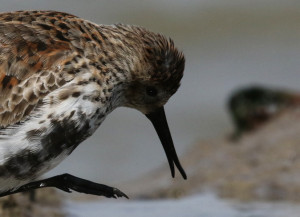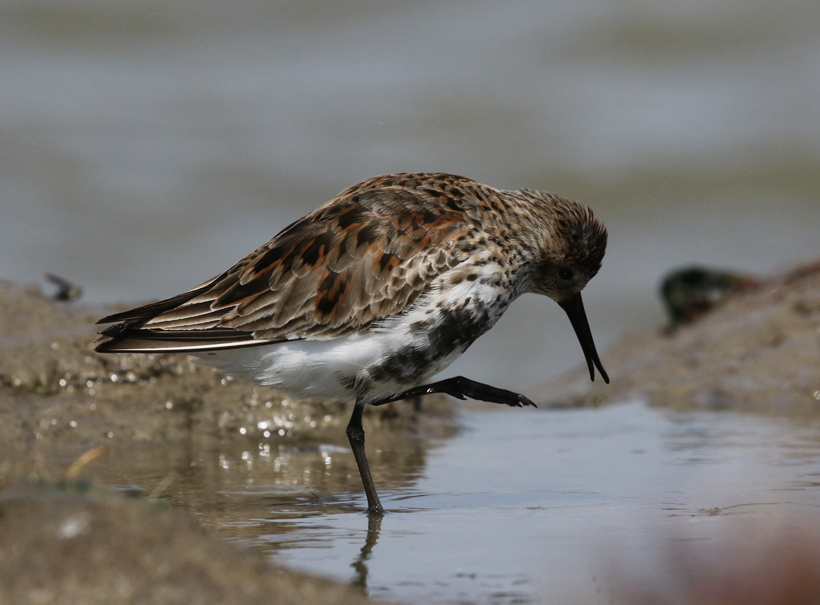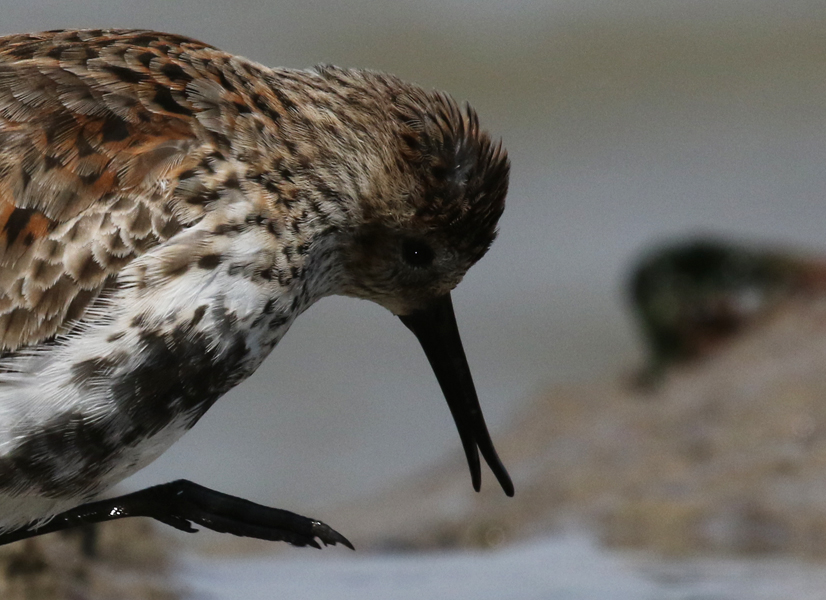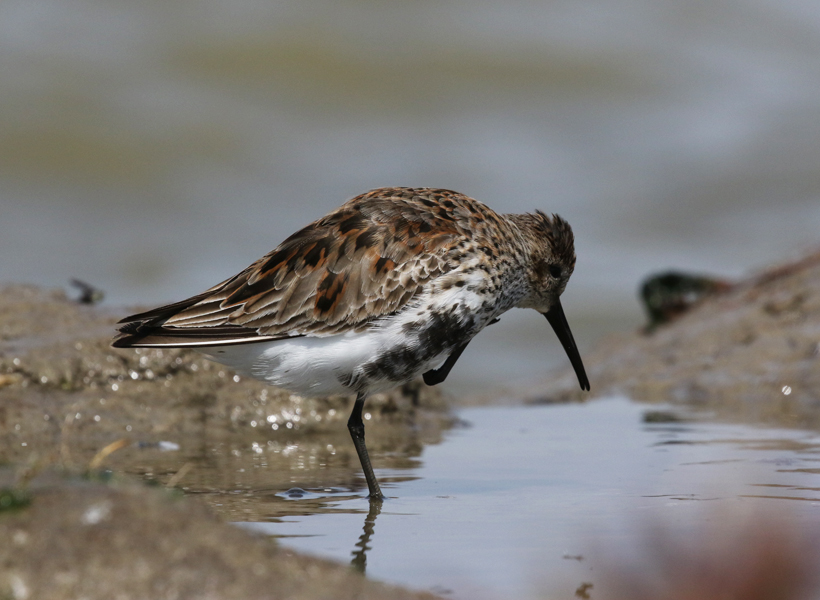
Feeding niche and bill evolution specific to prey was shown by Charles Darwin to be an extemely important factor in speciation in birds and this is seldom so obvious than in shorebirds. The wide range of bill sizes and shapes in shorebirds is an obvious indicator to the different feeding techniques they employ and the different types of prey they search for. Most of us think of wading birds as having straight bills, upturned bills or downturned bills and this is obviously true, but what is less well know is the ability they have to change the shape of their bill through a process called rhynchokinesis. This is usually impossible to see with the naked eye as it happens so quickly but I have found that it can sometimes be seen in photographs once I have returned home to study the images.
Over the course of a few visits I have been able to get very close to roosting Dunlin and was lucky enough to have excellent light that allowed me to take a series of high-quality photographs, some of which revealed this phenomenon.
Dunlins, Calidris alpina, have downcurved bills that are used for probing into soft mud as well as picking prey items off of the surface of harder substrates and it seems scarcely possible that they could change the shape of their bills. However, I photographed this bird scratching the back of its head and caught this upward flexing of the bill tip.
For anyone still unsure of what exactly rhynchokinesis is, here is a definition from lexico.com;
A form of upper jaw mobility, found in some birds, in which the terminal part of the upper jaw may be raised or lowered independently of the rest of it by the bending of the nasal or premaxillary bones.
I have captured this in several other species of shorebirds, having first noticed it in a Broad-billed Sandpiper that was bathing in the Gulf of Thailand as well as in feeding Sanderling – Sanderlings Feeding & Rhynchokinesis. Indeed, it seems that this behaviour has been observed to be fairly common in shorebirds including Dunlin, Sanderling, Curlew Sandpiper and Little Stint and allows them to forage more efficiently and take a wider range of prey than without it. This study also suggest that it may have played a role in the evolution of these birds – The use of distal rhynchokinesis by birds feeding in water.
However, I have seen it several times in birds that are preening and bathing.
Presumably in those cases it is just an involuntary action although when I saw it in Broad-billed Sandpiper it looked like an expression of enjoyment; purely coincidental I am sure.
Without taking photos I would not have been able to see this happening, the behaviour was just too fast as this video shows well.
And even in the series of photographs I took rhynchokinesis only showed up in two frames. This is the frame immediately before the one I have used to demonstrate this behaviour.
Hopefully in the future some of my photographs will show more behaviour like this which is almost impossible to notice with the naked eye, and I will be writing about it here when/if it happens. For now take a look at a selection of Dunlin photos taken at the same time as these ones – Dunlin High Tide Roost.


 May 14th, 2021
May 14th, 2021  Nick
Nick 


 Posted in
Posted in  Tags:
Tags: 










